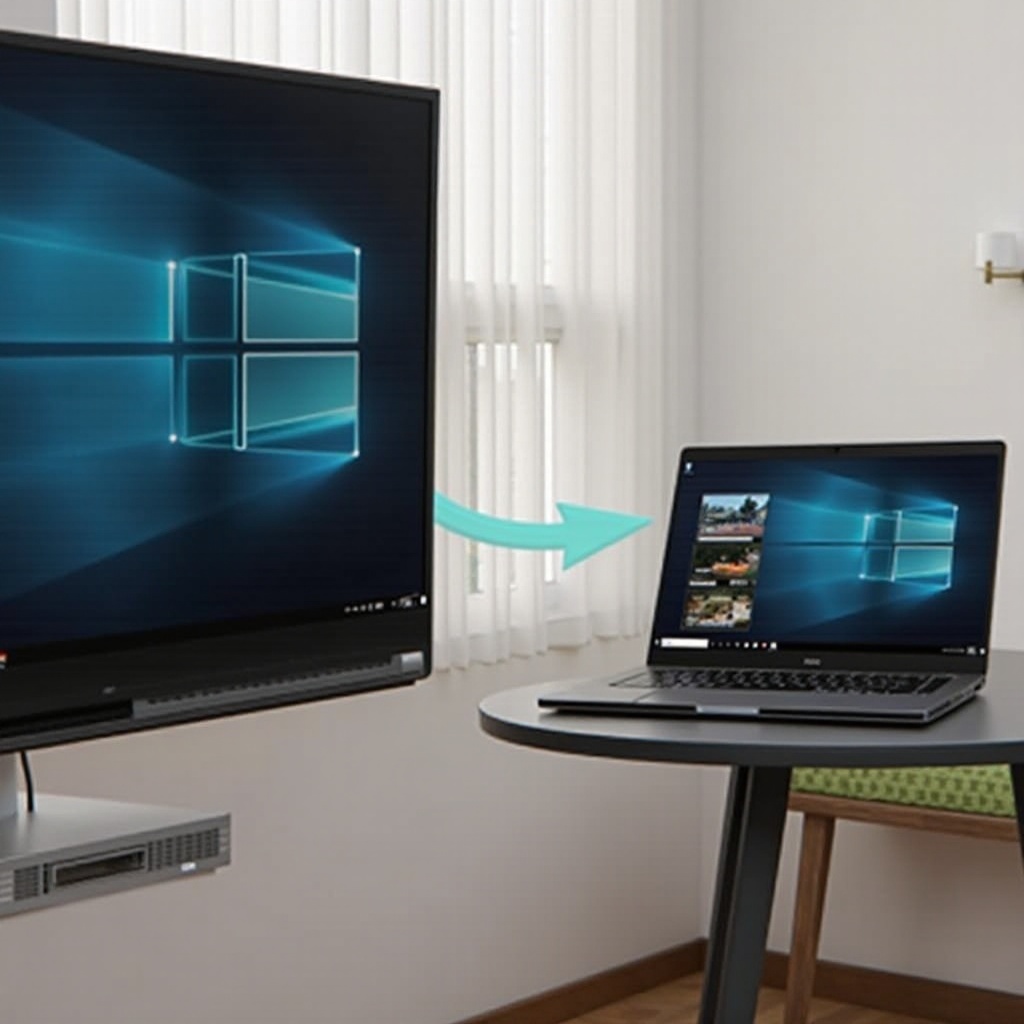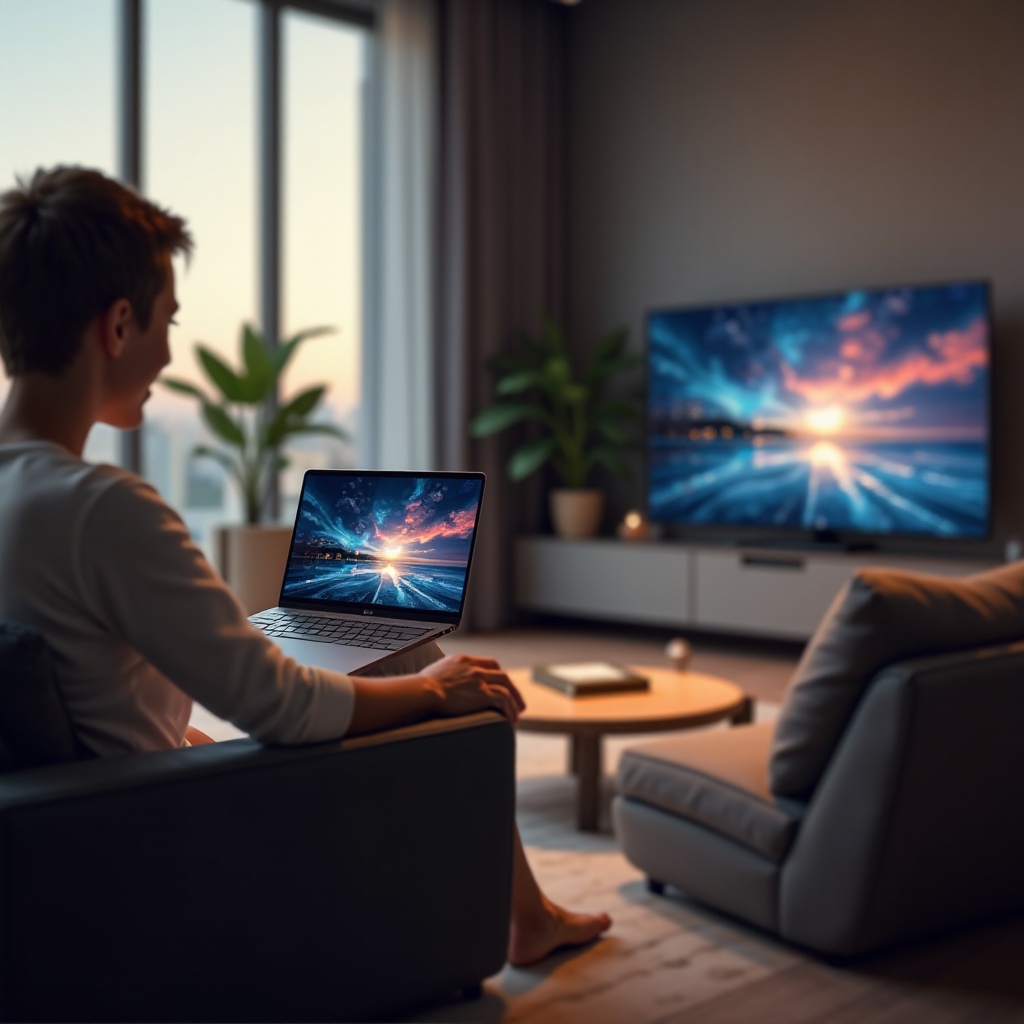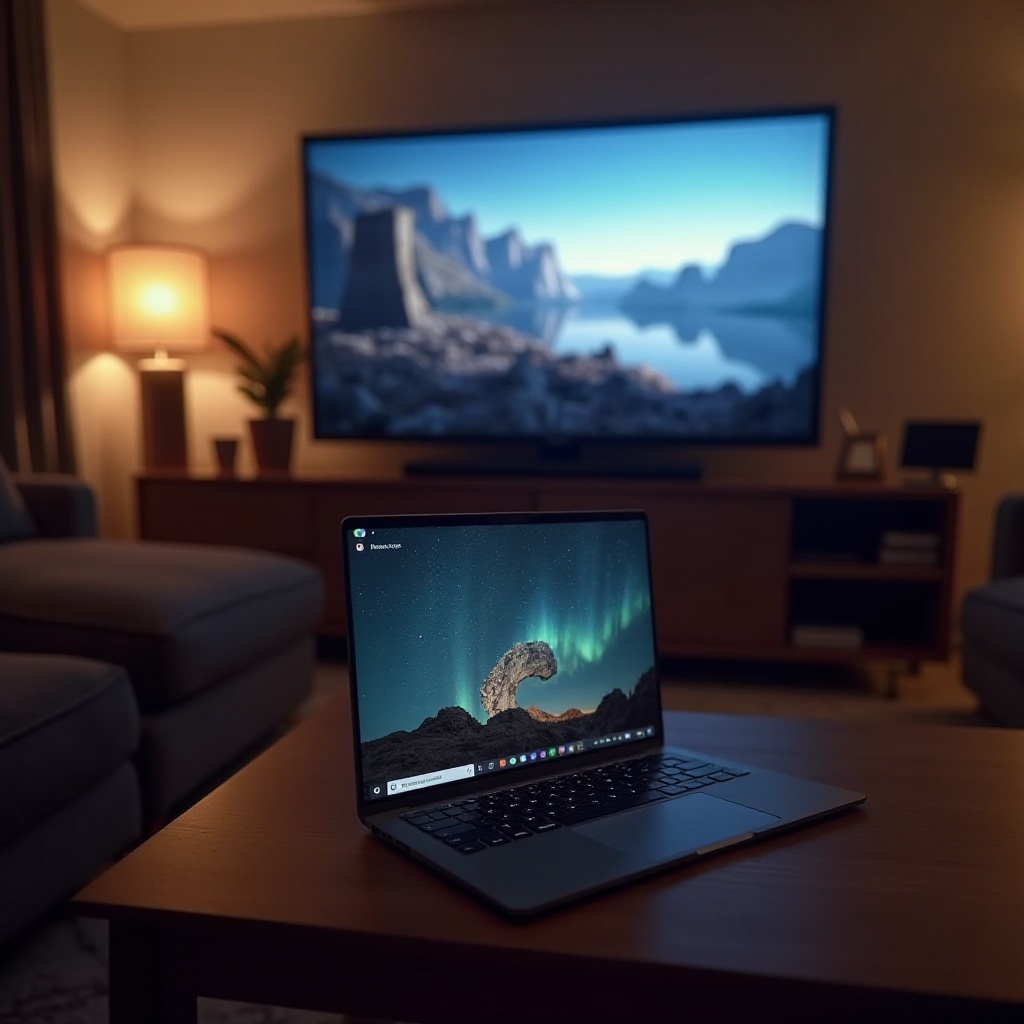Introduction
Want to enjoy your Chromebook content on a larger TV screen without an HDMI cable? Modern technology provides numerous solutions for wirelessly connecting your Chromebook to a TV, offering a seamless entertainment experience. Whether you wish to stream your favorite shows, present slides, or share photos with friends and family, this guide will show you various methods to achieve a wireless connection. We’ll also explore alternative wired options and tackle common troubleshooting issues to ensure a smooth setup. These methods not only eliminate the need for additional cables but also provide more flexibility in device placement.

Understanding Wireless Connection Options
Connecting your Chromebook to a TV wirelessly opens up a realm of possibilities. Several technologies and devices facilitate wireless screen mirroring, such as Chromecast and Miracast. Each of these methods has its own set of advantages, technical requirements, and setup processes.
-
Chromecast: Google’s Chromecast is a popular choice due to its ease of use and compatibility with multiple devices. It plugs into your TV’s HDMI port and allows you to stream content from your Chromebook by connecting over the same Wi-Fi network.
-
Miracast: This technology lets you mirror your Chromebook screen on a TV without the need for any internet connection. It establishes a peer-to-peer connection using Wi-Fi Direct technology, making it a great option if there’s no Wi-Fi network available.
-
Third-Party Apps: Several apps from the Chrome Web Store or Google Play can facilitate the screen mirroring process. These apps can offer additional features and customization options that might not be available with the in-built solutions.
Exploring these wireless options enables choosing the best method suited to your specific needs and technical setup.
How to Connect using Chromecast
Chromecast serves as one of the most straightforward ways to connect your Chromebook to a TV. Below are the steps to get you started:
-
Set Up Chromecast: First, plug the Chromecast device into your TV’s HDMI port and connect the USB power cable. Switch your TV input to the corresponding HDMI source.
-
Connect to Wi-Fi: Make sure both your Chromebook and Chromecast are on the same Wi-Fi network. The initial setup for Chromecast might require using the Google Home app on your mobile device to connect it to your Wi-Fi network.
-
Open Chrome Browser: On your Chromebook, open the Chrome browser. Click on the three vertical dots (menu) located at the top-right corner and select ‘Cast.
-
Choose Chromecast Device: In the Cast tab, you will see a list of available devices. Select your Chromecast from the list.
-
Cast Your Screen: You can choose to cast a specific tab, your entire desktop, or a file. For full-screen sharing, select ‘Cast desktop’ and then choose your Chromecast device again from the list.
Following these steps will project your Chromebook’s screen onto your TV, allowing you to enjoy a variety of content on a bigger screen.
Connecting via Miracast
Miracast is another effective method for screen mirroring, allowing you to connect your Chromebook to a TV without a pre-existing Wi-Fi network. Here’s how to do it:
-
Check Miracast Support: Ensure that both your Chromebook and TV support Miracast. Most modern TVs and many Chromebooks have this feature built-in.
-
Enable Miracast on TV: On your TV, navigate to the settings menu and enable Miracast or screen mirroring. The exact location of this setting might vary depending on the TV model.
-
Set Up on Chromebook: On your Chromebook, click on the status area in the bottom-right corner to open the menu and select the gear icon to go to Settings.
-
Connect to Miracast Display: Within the Settings, navigate to the Devices section and click on ‘Displays.’ Under ‘Cast Devices Available,’ you should see your TV or Miracast receiver listed. Click on it to start the mirroring process.
-
Mirror the Screen: Once connected, your Chromebook screen will be mirrored on the TV. Adjust the display settings if needed to ensure optimal resolution and aspect ratio.
Miracast’s peer-to-peer connection ensures a stable and high-quality streaming experience for your Chromebook.
Using Third-Party Apps for Screen Mirroring
In addition to built-in features and devices, third-party apps can provide versatile screen mirroring solutions for Chromebook. These apps can offer unique functionalities and are especially useful if you require more control over the mirroring process.
To proceed, follow these steps:
-
Explore Apps: Search for screen mirroring apps in the Chrome Web Store or Google Play. Some popular ones include Airtame, Reflector, and AllCast.
-
Download and Install: After identifying the app that best suits your requirements, download and install it on your Chromebook.
-
Set Up: Follow the app-specific setup instructions. This typically involves connecting both the TV and Chromebook to the same network and using the app to initiate the mirroring process.
-
Mirror Your Content: Open the app and follow the steps to start mirroring your Chromebook screen onto the TV. Adjust settings within the app to optimize the display quality and performance.
Using third-party apps allows for greater flexibility and customizability in your screen mirroring endeavors.

Alternative Wired Options: USB-C and DisplayPort
Apart from wireless methods, Chromebooks also offer wired connection options using USB-C or DisplayPort when HDMI is not available.
-
USB-C to HDMI Adapter: If your TV supports HDMI but your Chromebook does not have an HDMI port, consider using a USB-C to HDMI adapter. Simply connect the USB-C end to your Chromebook and the HDMI end to your TV.
-
USB-C to DisplayPort Adapter: For TVs or monitors with DisplayPort input, a USB-C to DisplayPort adapter can be used. Connect the adapter to the corresponding ports and select the appropriate input source on your TV or monitor.
-
Direct USB-C to DisplayPort: Some Chromebooks might support direct DisplayPort output from the USB-C slot. Ensure your TV or monitor has the corresponding port before selecting this option.
These wired alternatives provide a reliable connection with minimal lag, ideal for activities requiring high precision and real-time interaction.
Troubleshooting Common Issues
Encountering issues while connecting your Chromebook to a TV is not uncommon. Here are some troubleshooting tips:
-
Check Network: Ensure both devices are connected to the same Wi-Fi network if using wireless options like Chromecast.
-
Update Software: Ensure your Chromebook, TV firmware, and apps are updated to the latest version. Software updates often fix connectivity issues.
-
Restart Devices: Try restarting both your Chromebook and the TV. This can resolve minor glitches and initiate a fresh connection.
-
Reset Chromecast: If Chromecast isn’t working, try resetting it to factory settings through the Google Home app.
By troubleshooting these common issues, you can quickly resolve connectivity problems and enjoy seamless screen mirroring.

Conclusion
Connecting your Chromebook to a TV without HDMI is easier than ever with the variety of wireless and wired options available. Using Chromecast, Miracast, or third-party apps, you can achieve a high-quality screen mirroring experience. Additionally, wired solutions like USB-C to HDMI or DisplayPort adapters provide reliable alternatives. By understanding these methods and troubleshooting common issues, you can enjoy comfortable and versatile media streaming from your Chromebook to your TV.
Frequently Asked Questions
Can I connect my Chromebook to a TV wirelessly without a Chromecast?
Yes, you can use Miracast or third-party screen mirroring apps to connect your Chromebook to a TV wirelessly without needing Chromecast. Ensure your devices support the chosen method and follow the setup instructions.
What should I do if my Chromebook doesn’t detect my TV?
If your Chromebook doesn’t detect your TV, ensure both devices are on the same network, check for any software updates, restart both devices, and try using different screen mirroring apps or checking settings on your TV.
Is it possible to use a USB-C to HDMI adapter for connecting a Chromebook to a TV?
Yes, using a USB-C to HDMI adapter is a viable solution if your Chromebook lacks an HDMI port but has a USB-C slot. Simply connect the adapter between your Chromebook and TV, then select the correct input source on your TV to start the display.